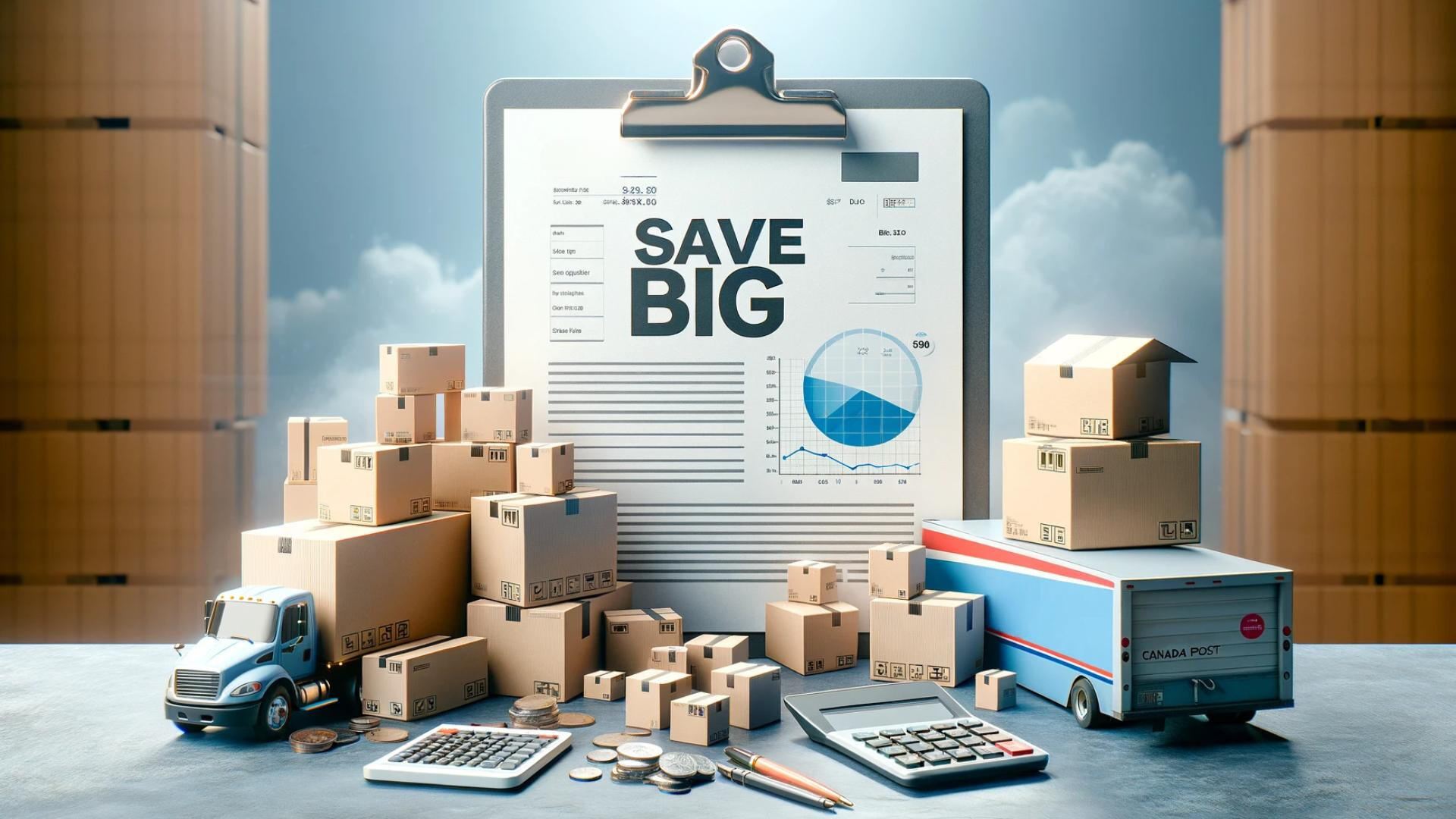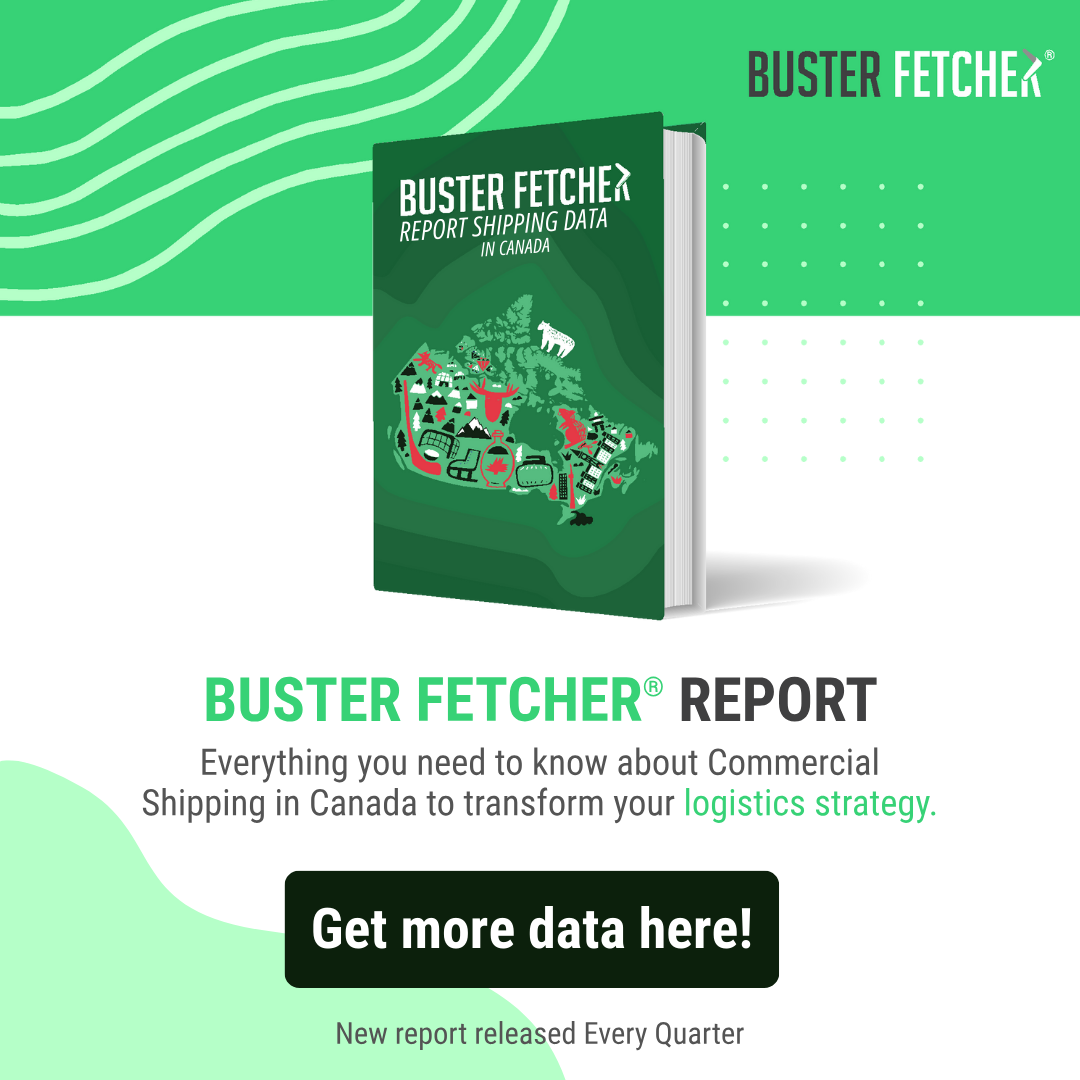Q3 2023 Data: Optimize Package Billing with Canada Post's Volumetric Equivalence
Published on November 11, 2023

Have you ever scratched your head over the complexity of Canada Post’s volumetric equivalence in shipping costs? Well, don’t worry because you’re not alone!
Understanding volumetric equivalence is crucial for e-commerce businesses that want to maximize their profitability by cutting down on their shipping expenses. Hey, especially if you’re living in Canada where a large percentage of packages are billed based on it!
But, why does volumetric equivalence matter, anyway? What can you do to gain more savings for your business? And what are the advantages of understanding and mastering its concept?
Stay tuned because in this article, you’ll definitely get the answers to all the questions you may have about Canada Post’s volumetric equivalence.
And with the aid of the Buster Fetcher Report Shipping Data, you can expect a clear vision of how significant it is for Canada’s provinces. Whether you’re a startup business or already an established company in the country, these insights will surely magnify your savings!
So, are you ready? Let’s go!
Table of contents
What is Volumetric Equivalence and Why Does it Matter?
How to Unlock Big Savings by Optimizing Your Packaging: Five Effective Strategies
Takeaway about Volumetric Equivalence and more data for savings
What is Volumetric Equivalence and Why Does it Matter?
Volumetric Equivalence, also known as Volumetric Weight or Dimensional Weight, is a concept utilized by Canada Post to calculate the space that a package or parcel occupies during transportation.
It is computed based on the actual dimensions of the package (length, width, and height). The purpose of using volumetric equivalence is to ensure that Canada Post charges accurate shipping costs based on the space a package occupies in its vehicles.
So if you’re shipping large but lightweight packages with Canada Post, there’s a high chance for your shipping costs to be more expensive! Especially when compared to shipping smaller but heavier packages.
So, why does it matter? Simple. Since a huge percentage of packages shipped with Canada Post are billed using volumetric equivalence, it is an absolute must for businesses like yours to optimize their packaging!
Why? Because this billing trick doesn’t just bump up shipping costs — it adds to fuel surcharges too! So when packages are billed this way, it means more dollars can potentially come out of your pockets.
To see an accurate representation of how significant volumetric equivalence is for Canadian businesses, let’s take a look at the Buster Fetcher® Report Shipping Data.
Observations about the packages billed based on Volumetric Equivalence
- High National Average: Across Canada, 44.77% of packages sent through Canada Post are billed based on volumetric equivalence. This underscores the importance for businesses to be aware of how their packages are being billed and the potential implications for shipping costs.
- Nova Scotia's Striking Percentage: Nova Scotia stands out, with a whopping 62.53% of packages being billed this way. This could indicate that businesses or individuals in Nova Scotia might frequently ship items in packaging that isn't optimally sized for their contents.
- Alberta & Manitoba's Lower Rates: On the flip side, Alberta and Manitoba have lower percentages at 20.88% and 22.97%, respectively, suggesting more efficient packaging practices in these provinces.
- Ontario's Noticeable Count: Considering Ontario's bustling business environment and large population, the 53.81% is particularly noteworthy. This suggests many businesses in Ontario might benefit from revisiting their packaging strategies.
- Quebec and British Columbia's Middle Ground: These two major provinces have percentages of 45.08% and 31.79%, respectively, placing them in the middle range among all provinces.
- Saskatchewan's Equilibrium: Saskatchewan's rate is close to the national average at 31.71%, indicating that businesses there follow a trend similar to the national pattern.
In summary, understanding the billing based on volumetric equivalence is critical for businesses across Canada. The disparities between provinces highlight the importance of optimizing package sizes, particularly in provinces with higher percentages, to ensure cost-effective shipping.
How to Unlock Big Savings by Optimizing Your Packaging: Five Effective Strategies
With a noteworthy 44.7% of packages sent through Canada Post that are billed using volumetric equivalence, it gives us an idea of how significant it really is for Canadian businesses out there.
Whether your business is based in Nova Scotia, Ontario, or Quebec — which garnered the highest percentage of packages being billed using volumetric equivalence, learning how to optimize your packaging can truly unlock unimaginable savings on shipping costs!
Here are five effective strategies to help your business jumpstart its way toward cost-effective shipping:
1. Precise Measurements of Product Weight and Dimensions
The accurate measurements of your product are certainly fundamental in optimizing packaging based on volumetric equivalence. Why? Simple, because it is actually based on your product’s dimensions.
Hey, having even the slightest error in measurement can bring significant changes in your shipping costs! So make sure to use precise measuring tools, consistent units of measurement, and reliable measurement systems for your company.
Oh, and it also helps to consider the packaging materials to be used such as boxes, bubble wrap, and other elements to accurately estimate the volumetric equivalence of your package.
2. Use the Right Size of Boxes
This one is easier said than done! Using just the right size of boxes that closely match the dimensions of your product is the most ideal way to optimize your packaging.
Avoid using extensively large boxes for smaller items because this just increases the volumetric weight of your package which then results in more expensive shipping costs.
So choose a box that provides a snug fit for your product while still allowing enough space to insert necessary protective packaging materials such as bubble wraps and fillers. Try out different sizes and make sure to choose the most appropriate one!
Real Savings Story:
One of our savvy clients trimmed just 2 centimeters off his box size after getting our customized advice. And you know what? He already saw his shipping costs cut in half! See? Small change, big savings!
3. Consider Custom Packaging
Of course, not all products are made with the same shapes and sizes, right? So finding a box that provides a snug fit for all types of products is nearly impossible. But your goal is to optimize your packaging, so there’s a way!
And it’s designing custom packaging that’s perfectly tailored to your product’s specific size, shape, and characteristics. It eliminates wasted space around the packaging, provides optimal protection, and also promotes your brand identity.
See? Custom packaging isn’t just a trend nowadays, it’s a smart and economical business decision that you should invest in!
4. Try Consolidating Multiple Packages in One Shipment
Now this is a smart strategy, especially for businesses that regularly ship multiple products with different shapes and sizes of packaging.
Why? Usually, the volume of multiple packages combined in a single box is lower compared to the overall volume of individually boxed packages.
This brings a lot of useful advantages for your business such as huge savings in shipping costs, efficient use of packaging materials, and streamlined fulfillment process. See? It’s like you're hitting multiple birds with one stone!
5. Regularly Review and Adjust your Package Optimization Strategies
Of course, it’s not enough to just formulate your package optimization strategies and let them work on their own. We’re living in an industry that requires constant adaptation to the changing demands of the market.
There will be times when your product line will change or your shipping patterns will be different, so make sure to regularly review your strategies and adjust accordingly!
Bonus Tip:
But wait, here’s one more! Dive into the last six months of your company’s shipping invoices. Why? Doing this will allow you to spot packages that are billed on volumetric equivalence. This means that you can potentially uncover some serious savings opportunities on shipping!
Takeaway about Volumetric Equivalence and more data for savings
Overlooking the concept of volumetric equivalence could be a crucial mistake for your business strategies. It hurts your chances of getting more saving opportunities in shipping costs, money that you could’ve used to advance your company’s growth!
It’s all about awareness. Knowing the ins and outs of volumetric equivalence can help your business gain greater savings, competitive advantage, and customer satisfaction.
And take note — almost 5 out of 10 packages shipped with Canada Post are billed with volumetric equivalence! This crucial statistic is brought to you by Buster Fetcher Report Shipping Data certainly calls for Canadian businesses to take action.
Do you want to start saving big on shipping? Then optimize your packaging now with the strategies we’ve discussed and let the results talk for themselves. If you want more practical insights and data about shipping, make sure to download the full Buster Fetcher Report!
It provides a careful analysis of more than 1.7 million packages shipped with Canada Post, FedEx, Purolator, and UPS.
Explore the entirety of the Buster Fetcher Report to gain significant insights, let’s brainstorm for effective strategies, and together — we’ll Win the Shipping Game™!



